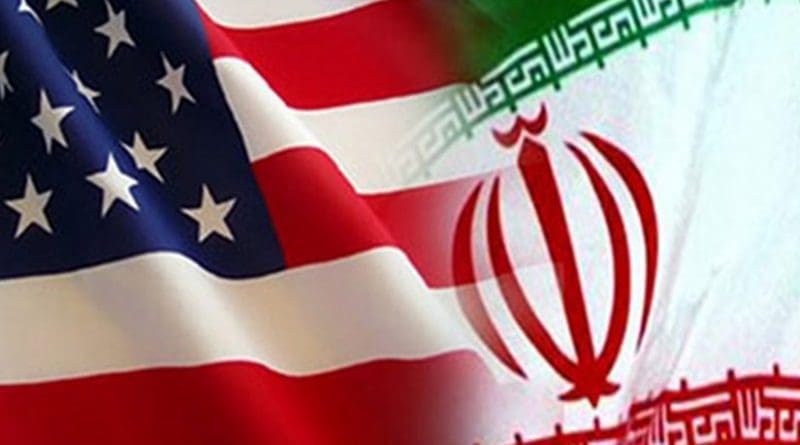US-Iran Hostility In The Pandemic Era – Analysis
By RSIS
The US and Iran are both being ravaged by COVID-19. Iran’s problems, however, are compounded by damaging American sanctions, which narrow Tehran’s policy options in dealing with its predicament.
By Amin Saikal*
The United States and Iran are both being savaged by COVID-19, but there has been no let-up in their mutual hostility. President Donald Trump has ramped up his policy of ‘maximum pressure’ to tame the Iranian Islamic regime in conformity with what he regards as America’s geopolitical interests.
Iran’s clerical leadership has refused to soften its defiance and resistance. Neither side’s belligerent rhetoric and actions have so far paid off. A major confrontation between them remains a prospect for early next year, if Trump is re-elected. In the wake of the pandemic crisis, one would normally have expected the two protagonists to cool their enmity in favour of more urgent domestic needs. Yet, they have continued to trade barbs, with tensions remaining high between them.
Locked in Major Collision Course
In the last month alone, American forces and Iran-backed Shia militias have exchanged fire in Iraq, the Iranian and American navies have threatened each other in the Persian Gulf, and President Trump has ordered the US navy to ‘shoot down’ any hostile Iranian vessels. Washington has also blocked Tehran’s request for a US$5 billion loan from the International Monetary Fund to cope with the virus’s fallout.
The launch of a military satellite into space in mid-April by the Iranian Islamic Revolutionary Guard Corps (IRGC), which the Trump administration has designated a ‘terrorist organisation’, invited a stiff US response. While Tehran described the satellite as a ‘multi-purpose’ tool that expands the IRGC’s ‘strategic intelligence’, Secretary of State Mike Pompeo condemned the development as yet another Iranian measure to enhance its aggressive missile capability.
Washington is now reportedly preparing to pressure the UN Security Council to reinstate UN sanctions against Iran. The aim is to reinforce US withdrawal from the July 2015 Iran nuclear agreement (formally known as the Joint Comprehensive Plan of Action – JCPOA), although Washington is no longer a party to the agreement and its resolution would be vetoed by Russia and China.
The two sides remain locked in a major collision course, with Israel and Saudi Arabia on standby to support the US in the process. The focus on Iran as the main enemy has become an enduring catalyst in strategically binding the US and its regional allies. This factor is unlikely to weaken under Trump or even possibly after Trump as long as there is strong bipartisan opposition to Tehran in the US Congress.
Iran’s Options Amid Predicament
The Iranian regime is now in a very difficult predicament. It needs to deal with the combined economic and social effects of the coronavirus and US sanctions with diminishing resources but growing public urgency. What are Iran’s policy options to cope with a very dire situation?
One is to sit tight until the outcome of America’s presidential election in November, in case Trump loses to Joe Biden, who is likely to be less combative towards Iran. But this cannot provide immunity from growing public discontent that had resulted in widespread political and social unrest prior to the advent of COVID-19.
The Iranian society has borne the brunt of damages caused by the virus and sanctions as well as a politically pluralist theocratic system of governance that has not worked well. It is in need of immediate and long-term relief.
The second option is to start renegotiating those JCPOA items that would make the Trump administration lift some of its draconian sanctions. This is not an option that sits well with the conservative forces in the ruling clerical class under Ayatollah Ali Khamenei, who dominates the levers of power.
However, moderate President Hassan Rouhani has indicated that he would be open to dialogue with Washington, provided that the US drops its sanctions as a prelude to such a dialogue. If this happens, it would entice the less ideological and more pragmatic conservative elements to support Rouhani’s efforts, as they had done over the JCPOA.
Enmeshing the Options
The third option is enmeshed with the second. It requires the regime to retrench its exorbitant regional security costs by reducing its sponsorship of various forces in Iraq, Syria, Lebanon and Yemen. This measure also has its own difficulties, as the regime’s domestic security is deeply intertwined with that of its regional entanglements.
But it could address the issue by focusing mainly on its national defence in protecting Iran’s borders against the backdrop of reaching a modus vivendi with the US. This would also lessen the grounds for Iran’s regional rivals, Israel and Saudi Arabia, to view the country as a formidable threat.
The regime has proved to be inventive and pragmatic on many occasions in the past. It now needs to engage in another process of domestic and foreign policy reorientation in a changed COVID-19 world. The alternative to this is the widening of the gulf and struggle between state and society in Iran and the country’s oil riches being sucked in by more costly and potentially unmanageable internal and external challenges.
*Amin Saikal is former Distinguished Professor of Political Science and Middle East specialist at the Australian National University, and author of Iran Rising: The Survival and Future of the Islamic Republic (Princeton University Press, 2019); and co-author [with James Pisactori] of Islam Beyond Borders: The Umma in World Politics (Cambridge University Press, 2019).

